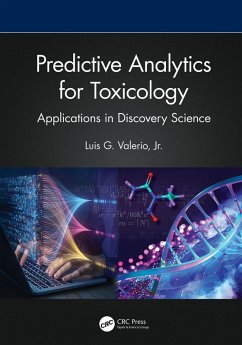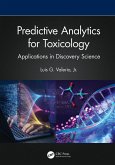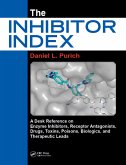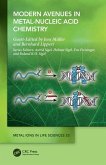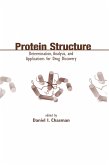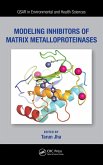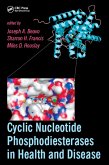Luis G. Valerio Jr.
Predictive Analytics for Toxicology (eBook, ePUB)
Applications in Discovery Science
189,95 €
189,95 €
inkl. MwSt.
Sofort per Download lieferbar

95 °P sammeln
189,95 €
Als Download kaufen

189,95 €
inkl. MwSt.
Sofort per Download lieferbar

95 °P sammeln
Jetzt verschenken
Alle Infos zum eBook verschenken
189,95 €
inkl. MwSt.
Sofort per Download lieferbar
Alle Infos zum eBook verschenken

95 °P sammeln
Luis G. Valerio Jr.
Predictive Analytics for Toxicology (eBook, ePUB)
Applications in Discovery Science
- Format: ePub
- Merkliste
- Auf die Merkliste
- Bewerten Bewerten
- Teilen
- Produkt teilen
- Produkterinnerung
- Produkterinnerung

Bitte loggen Sie sich zunächst in Ihr Kundenkonto ein oder registrieren Sie sich bei
bücher.de, um das eBook-Abo tolino select nutzen zu können.
Hier können Sie sich einloggen
Hier können Sie sich einloggen
Sie sind bereits eingeloggt. Klicken Sie auf 2. tolino select Abo, um fortzufahren.

Bitte loggen Sie sich zunächst in Ihr Kundenkonto ein oder registrieren Sie sich bei bücher.de, um das eBook-Abo tolino select nutzen zu können.
This book addresses the challenges of accurately predicting high-level endpoints of toxicity and explores the use of computational and artificial intelligence research to automate predictive toxicology.
- Geräte: eReader
- mit Kopierschutz
- eBook Hilfe
Andere Kunden interessierten sich auch für
![Predictive Analytics for Toxicology (eBook, PDF) Predictive Analytics for Toxicology (eBook, PDF)]() Luis G. Valerio Jr.Predictive Analytics for Toxicology (eBook, PDF)189,95 €
Luis G. Valerio Jr.Predictive Analytics for Toxicology (eBook, PDF)189,95 €![The Inhibitor Index (eBook, ePUB) The Inhibitor Index (eBook, ePUB)]() Daniel PurichThe Inhibitor Index (eBook, ePUB)220,95 €
Daniel PurichThe Inhibitor Index (eBook, ePUB)220,95 €![Modern Avenues in Metal-Nucleic Acid Chemistry (eBook, ePUB) Modern Avenues in Metal-Nucleic Acid Chemistry (eBook, ePUB)]() Modern Avenues in Metal-Nucleic Acid Chemistry (eBook, ePUB)47,95 €
Modern Avenues in Metal-Nucleic Acid Chemistry (eBook, ePUB)47,95 €![Protein Structure (eBook, ePUB) Protein Structure (eBook, ePUB)]() Protein Structure (eBook, ePUB)63,95 €
Protein Structure (eBook, ePUB)63,95 €![Modeling Inhibitors of Matrix Metalloproteinases (eBook, ePUB) Modeling Inhibitors of Matrix Metalloproteinases (eBook, ePUB)]() Modeling Inhibitors of Matrix Metalloproteinases (eBook, ePUB)113,95 €
Modeling Inhibitors of Matrix Metalloproteinases (eBook, ePUB)113,95 €![Multicomponent Reactions (eBook, ePUB) Multicomponent Reactions (eBook, ePUB)]() Multicomponent Reactions (eBook, ePUB)47,95 €
Multicomponent Reactions (eBook, ePUB)47,95 €![Cyclic Nucleotide Phosphodiesterases in Health and Disease (eBook, ePUB) Cyclic Nucleotide Phosphodiesterases in Health and Disease (eBook, ePUB)]() Cyclic Nucleotide Phosphodiesterases in Health and Disease (eBook, ePUB)60,95 €
Cyclic Nucleotide Phosphodiesterases in Health and Disease (eBook, ePUB)60,95 €-
-
-
This book addresses the challenges of accurately predicting high-level endpoints of toxicity and explores the use of computational and artificial intelligence research to automate predictive toxicology.
Dieser Download kann aus rechtlichen Gründen nur mit Rechnungsadresse in A, B, BG, CY, CZ, D, DK, EW, E, FIN, F, GR, HR, H, IRL, I, LT, L, LR, M, NL, PL, P, R, S, SLO, SK ausgeliefert werden.
Produktdetails
- Produktdetails
- Verlag: Taylor & Francis
- Erscheinungstermin: 13. August 2024
- Englisch
- ISBN-13: 9781040101865
- Artikelnr.: 72272390
- Verlag: Taylor & Francis
- Erscheinungstermin: 13. August 2024
- Englisch
- ISBN-13: 9781040101865
- Artikelnr.: 72272390
- Herstellerkennzeichnung Die Herstellerinformationen sind derzeit nicht verfügbar.
Luis G. Valerio, Jr. has been a toxicologist for over 26 years. He has served in the public health arena for 20 years. He earned his Ph.D. in Pharmaceutical Science from the University of Colorado in Denver and is a board-certified toxicologist in the Academy of Toxicological Sciences. He was a National Research Council, National Academies of Sciences, Engineering, and Medicine Fellow in Gastroenterology at the University of Colorado, School of Medicine, Department of Medicine, Division of Gastroenterology and Hepatology. Following his academic research on the molecular regulation of cytochrome P450 1A1 and 1A2, he served as a National Science Foundation International Postdoctoral Research Fellow at the Autonomous University of Barcelona, Spain where he studied the biochemistry and metabolism of alcohol dehydrogenase enzymes. He served as a temporary advisor for the World Health Organization and on international scientific committees assessing the safety of chemicals added to food. He has worked on quality standards-setting committees for human pharmaceuticals. He has several years of industry experience in consumer product safety and chemical toxicology. He has overseen clinical studies to predict dermal hazards of consumer products. He has served as a Scientific Director of a food chemical and manufacturing trade association. He is currently Editor-in-Chief of the journals, Toxicology Mechanisms and Methods and Expert Opinion on Drug Metabolism & Toxicology (Taylor & Francis Group). He enjoys writing and has published 100 articles on a variety of topics in mechanisms of chemical toxicity, xenobiotic metabolism, safety science, and computational science.
About the Author
Preface
1 Finding No Limit: Discovery Science
1.1 Introduction
1.2 Predictive Analytics
1.3 Data Service
1.4 Examination of Data Quality
1.5 Program Development Intelligence
1.6 Data Visualization
1.7 Decision Analysis
1.8 Conclusion
2 Exploring the Science of Prediction
2.1 Introduction
2.2 The Ubiquitous Application of Prediction Science in Society
2.3 Understanding the Science of Prediction through Machine Learning
2.4 Predictive Modeling of the Human Brain
2.4.1 Human Learning and Logic
2.4.2 Computerized Modeling of Human Learning
2.5 Major Stages in Model Development and Prediction Testing
2.5.1 Model Objectives and Scope
2.5.2 Data Selection
2.5.3 Data Curation
2.5.4 Data Cleaning
2.5.5 Feature Selection
2.5.6 Model Construction
2.5.7 Model Testing
2.6 Current Trends in Machine Learning to Make Predictions
2.7 Conclusions
3 Predictive Analytic Approaches
3.1 Introduction
3.2 Descriptive Analytics
3.3 Diagnostic Analytics
3.4 Predictive Analytics
3.5 Prescriptive Analytics
3.6 Characteristics of a Predictive Model
3.7 Categories of Machine Learning Approaches
3.7.1 Supervised Machine Learning
3.7.2 Unsupervised Machine Learning
3.7.3 Semi- supervised Machine Learning
3.8 Machine Learning Algorithms
3.8.1 Unsupervised Machine Learning Techniques
3.8.2 Supervised Machine Learning
3.9 Conclusions
4 The Role of Predictive Analytics in Translational Science
4.1 Introduction
4.2 What Is Translational Science?
4.3 The Rapid Pace of Translational Science
4.4 Understanding Translational Science Research Tools
4.4.1 Relevant Targets for Translational Science Tools
4.5 Predictive Analytics in Advancing Translational Science
4.6 Development of Clinical Decision- Support Models
4.7 Conclusions
5 Toxicology and Artificial Intelligence
5.1 Introduction
5.2 Fundamental Ideas with AI
5.3 Toxicological Research with AI
5.3.1 Toxicogenomics
5.3.2 Disease and Health-Based Research
5.3.3 Prediction of Toxicity
5.4 Limitations and Considerations of AI
5.4.1 AI and the Human Workforce
5.4.2 AI and Human Behavior
5.4.3 AI and Ethical Considerations
5.4.4 AI and Transparency
5.4.5 Cost of Implementing AI
5.4.6 An Environmental Dichotomy
5.5 Risk Assessment and AI
5.6 Conclusions
6 The Explosion of Computational Approaches for Hazard Identification
6.1 Introduction
6.2 Initiatives and Large- Scale Programs Supporting Computational Approaches for Hazard Identification of Chemicals
6.2.1 Toxicity Testing in the 21st Century: A Vision and Strategy - Tox21
6.2.2 Other Initiatives and Major Activities Using Predictive Analytics Approaches for Toxicology
6.3 Widespread Availability of Public Data, Tools, and Resources for Modeling
6.4 Chemical Hazard Identification, Safety, and Risk- Driven Needs
6.5 Data Science: Uses and Definition
6.6 Conclusions
7 Opportunities for Computational Modeling in Toxicology Prediction
7.1 Introduction
7.2 Current Applications of Computational Modeling in Toxicity Prediction
7.3 Opportunistic Areas in Computational Modeling for Toxicology Prediction
7.3.1 Modeling High- Value Organ- Specific Toxicities
7.3.2 In vitro Modeling
7.3.3 Mixtures Toxicity Modeling
7.3.4 Metabolic Reactions Modeling
7.3.5 Nanotoxicology Modeling
7.3.6 Modeling Based on Clinical Toxicology Data
7.3.7 Epidemiology Data- Based Modeling
7.3.8 Advanced Artificial Intelligence (AI) Systems Modeling
7.4 Looking Forward
7.5 Conclusions
8 Key Challenges in Computational Methods
8.1 Introduction
8.2 Data Availability and Quality
8.3 Model Overfitting and Underfitting
8.4 Feature Selection and Complex Dimensionality
8.4.1 Feature Selection Methods
8.4.2 Complex Dimensionality
8.4.3 Efficiency
8.5 Modeling Complex Chemical Interactions
8.6 Generalizability and Aging of Computational Models
8.7 Accuracy and Validation Assessment of Models
8.7.1 Validation and Verification
8.7.2 Uncertainty
8.8 Translating Models into Practice
8.9 Scalability
8.10 Expertise in Predictive Model Development and Use
8.10.1 Model Selection
8.11 Education
8.12 Other Challenges
8.13 Conclusion
9 Predictive Analytics in Driving Growth in Toxicology
9.1 Introduction
9.2 Predictive Analytics in Toxicology
9.3 Advantages of Using Predictive Data Analytics in Toxicology
9.3.1 Cost and Time Efficiency
9.3.2 Enhanced Accuracy
9.3.3 Reduction in Use of Animals for Experimentation
9.3.4 Improved Access to Predictive Data Analytic Tools
9.3.5 Data- Driven Approaches for Better Decision- Making
9.4 Current Initiatives Fueling Predictive Data Analytics in Toxicology
9.5 Conclusions
Preface
1 Finding No Limit: Discovery Science
1.1 Introduction
1.2 Predictive Analytics
1.3 Data Service
1.4 Examination of Data Quality
1.5 Program Development Intelligence
1.6 Data Visualization
1.7 Decision Analysis
1.8 Conclusion
2 Exploring the Science of Prediction
2.1 Introduction
2.2 The Ubiquitous Application of Prediction Science in Society
2.3 Understanding the Science of Prediction through Machine Learning
2.4 Predictive Modeling of the Human Brain
2.4.1 Human Learning and Logic
2.4.2 Computerized Modeling of Human Learning
2.5 Major Stages in Model Development and Prediction Testing
2.5.1 Model Objectives and Scope
2.5.2 Data Selection
2.5.3 Data Curation
2.5.4 Data Cleaning
2.5.5 Feature Selection
2.5.6 Model Construction
2.5.7 Model Testing
2.6 Current Trends in Machine Learning to Make Predictions
2.7 Conclusions
3 Predictive Analytic Approaches
3.1 Introduction
3.2 Descriptive Analytics
3.3 Diagnostic Analytics
3.4 Predictive Analytics
3.5 Prescriptive Analytics
3.6 Characteristics of a Predictive Model
3.7 Categories of Machine Learning Approaches
3.7.1 Supervised Machine Learning
3.7.2 Unsupervised Machine Learning
3.7.3 Semi- supervised Machine Learning
3.8 Machine Learning Algorithms
3.8.1 Unsupervised Machine Learning Techniques
3.8.2 Supervised Machine Learning
3.9 Conclusions
4 The Role of Predictive Analytics in Translational Science
4.1 Introduction
4.2 What Is Translational Science?
4.3 The Rapid Pace of Translational Science
4.4 Understanding Translational Science Research Tools
4.4.1 Relevant Targets for Translational Science Tools
4.5 Predictive Analytics in Advancing Translational Science
4.6 Development of Clinical Decision- Support Models
4.7 Conclusions
5 Toxicology and Artificial Intelligence
5.1 Introduction
5.2 Fundamental Ideas with AI
5.3 Toxicological Research with AI
5.3.1 Toxicogenomics
5.3.2 Disease and Health-Based Research
5.3.3 Prediction of Toxicity
5.4 Limitations and Considerations of AI
5.4.1 AI and the Human Workforce
5.4.2 AI and Human Behavior
5.4.3 AI and Ethical Considerations
5.4.4 AI and Transparency
5.4.5 Cost of Implementing AI
5.4.6 An Environmental Dichotomy
5.5 Risk Assessment and AI
5.6 Conclusions
6 The Explosion of Computational Approaches for Hazard Identification
6.1 Introduction
6.2 Initiatives and Large- Scale Programs Supporting Computational Approaches for Hazard Identification of Chemicals
6.2.1 Toxicity Testing in the 21st Century: A Vision and Strategy - Tox21
6.2.2 Other Initiatives and Major Activities Using Predictive Analytics Approaches for Toxicology
6.3 Widespread Availability of Public Data, Tools, and Resources for Modeling
6.4 Chemical Hazard Identification, Safety, and Risk- Driven Needs
6.5 Data Science: Uses and Definition
6.6 Conclusions
7 Opportunities for Computational Modeling in Toxicology Prediction
7.1 Introduction
7.2 Current Applications of Computational Modeling in Toxicity Prediction
7.3 Opportunistic Areas in Computational Modeling for Toxicology Prediction
7.3.1 Modeling High- Value Organ- Specific Toxicities
7.3.2 In vitro Modeling
7.3.3 Mixtures Toxicity Modeling
7.3.4 Metabolic Reactions Modeling
7.3.5 Nanotoxicology Modeling
7.3.6 Modeling Based on Clinical Toxicology Data
7.3.7 Epidemiology Data- Based Modeling
7.3.8 Advanced Artificial Intelligence (AI) Systems Modeling
7.4 Looking Forward
7.5 Conclusions
8 Key Challenges in Computational Methods
8.1 Introduction
8.2 Data Availability and Quality
8.3 Model Overfitting and Underfitting
8.4 Feature Selection and Complex Dimensionality
8.4.1 Feature Selection Methods
8.4.2 Complex Dimensionality
8.4.3 Efficiency
8.5 Modeling Complex Chemical Interactions
8.6 Generalizability and Aging of Computational Models
8.7 Accuracy and Validation Assessment of Models
8.7.1 Validation and Verification
8.7.2 Uncertainty
8.8 Translating Models into Practice
8.9 Scalability
8.10 Expertise in Predictive Model Development and Use
8.10.1 Model Selection
8.11 Education
8.12 Other Challenges
8.13 Conclusion
9 Predictive Analytics in Driving Growth in Toxicology
9.1 Introduction
9.2 Predictive Analytics in Toxicology
9.3 Advantages of Using Predictive Data Analytics in Toxicology
9.3.1 Cost and Time Efficiency
9.3.2 Enhanced Accuracy
9.3.3 Reduction in Use of Animals for Experimentation
9.3.4 Improved Access to Predictive Data Analytic Tools
9.3.5 Data- Driven Approaches for Better Decision- Making
9.4 Current Initiatives Fueling Predictive Data Analytics in Toxicology
9.5 Conclusions
About the Author
Preface
1 Finding No Limit: Discovery Science
1.1 Introduction
1.2 Predictive Analytics
1.3 Data Service
1.4 Examination of Data Quality
1.5 Program Development Intelligence
1.6 Data Visualization
1.7 Decision Analysis
1.8 Conclusion
2 Exploring the Science of Prediction
2.1 Introduction
2.2 The Ubiquitous Application of Prediction Science in Society
2.3 Understanding the Science of Prediction through Machine Learning
2.4 Predictive Modeling of the Human Brain
2.4.1 Human Learning and Logic
2.4.2 Computerized Modeling of Human Learning
2.5 Major Stages in Model Development and Prediction Testing
2.5.1 Model Objectives and Scope
2.5.2 Data Selection
2.5.3 Data Curation
2.5.4 Data Cleaning
2.5.5 Feature Selection
2.5.6 Model Construction
2.5.7 Model Testing
2.6 Current Trends in Machine Learning to Make Predictions
2.7 Conclusions
3 Predictive Analytic Approaches
3.1 Introduction
3.2 Descriptive Analytics
3.3 Diagnostic Analytics
3.4 Predictive Analytics
3.5 Prescriptive Analytics
3.6 Characteristics of a Predictive Model
3.7 Categories of Machine Learning Approaches
3.7.1 Supervised Machine Learning
3.7.2 Unsupervised Machine Learning
3.7.3 Semi- supervised Machine Learning
3.8 Machine Learning Algorithms
3.8.1 Unsupervised Machine Learning Techniques
3.8.2 Supervised Machine Learning
3.9 Conclusions
4 The Role of Predictive Analytics in Translational Science
4.1 Introduction
4.2 What Is Translational Science?
4.3 The Rapid Pace of Translational Science
4.4 Understanding Translational Science Research Tools
4.4.1 Relevant Targets for Translational Science Tools
4.5 Predictive Analytics in Advancing Translational Science
4.6 Development of Clinical Decision- Support Models
4.7 Conclusions
5 Toxicology and Artificial Intelligence
5.1 Introduction
5.2 Fundamental Ideas with AI
5.3 Toxicological Research with AI
5.3.1 Toxicogenomics
5.3.2 Disease and Health-Based Research
5.3.3 Prediction of Toxicity
5.4 Limitations and Considerations of AI
5.4.1 AI and the Human Workforce
5.4.2 AI and Human Behavior
5.4.3 AI and Ethical Considerations
5.4.4 AI and Transparency
5.4.5 Cost of Implementing AI
5.4.6 An Environmental Dichotomy
5.5 Risk Assessment and AI
5.6 Conclusions
6 The Explosion of Computational Approaches for Hazard Identification
6.1 Introduction
6.2 Initiatives and Large- Scale Programs Supporting Computational Approaches for Hazard Identification of Chemicals
6.2.1 Toxicity Testing in the 21st Century: A Vision and Strategy - Tox21
6.2.2 Other Initiatives and Major Activities Using Predictive Analytics Approaches for Toxicology
6.3 Widespread Availability of Public Data, Tools, and Resources for Modeling
6.4 Chemical Hazard Identification, Safety, and Risk- Driven Needs
6.5 Data Science: Uses and Definition
6.6 Conclusions
7 Opportunities for Computational Modeling in Toxicology Prediction
7.1 Introduction
7.2 Current Applications of Computational Modeling in Toxicity Prediction
7.3 Opportunistic Areas in Computational Modeling for Toxicology Prediction
7.3.1 Modeling High- Value Organ- Specific Toxicities
7.3.2 In vitro Modeling
7.3.3 Mixtures Toxicity Modeling
7.3.4 Metabolic Reactions Modeling
7.3.5 Nanotoxicology Modeling
7.3.6 Modeling Based on Clinical Toxicology Data
7.3.7 Epidemiology Data- Based Modeling
7.3.8 Advanced Artificial Intelligence (AI) Systems Modeling
7.4 Looking Forward
7.5 Conclusions
8 Key Challenges in Computational Methods
8.1 Introduction
8.2 Data Availability and Quality
8.3 Model Overfitting and Underfitting
8.4 Feature Selection and Complex Dimensionality
8.4.1 Feature Selection Methods
8.4.2 Complex Dimensionality
8.4.3 Efficiency
8.5 Modeling Complex Chemical Interactions
8.6 Generalizability and Aging of Computational Models
8.7 Accuracy and Validation Assessment of Models
8.7.1 Validation and Verification
8.7.2 Uncertainty
8.8 Translating Models into Practice
8.9 Scalability
8.10 Expertise in Predictive Model Development and Use
8.10.1 Model Selection
8.11 Education
8.12 Other Challenges
8.13 Conclusion
9 Predictive Analytics in Driving Growth in Toxicology
9.1 Introduction
9.2 Predictive Analytics in Toxicology
9.3 Advantages of Using Predictive Data Analytics in Toxicology
9.3.1 Cost and Time Efficiency
9.3.2 Enhanced Accuracy
9.3.3 Reduction in Use of Animals for Experimentation
9.3.4 Improved Access to Predictive Data Analytic Tools
9.3.5 Data- Driven Approaches for Better Decision- Making
9.4 Current Initiatives Fueling Predictive Data Analytics in Toxicology
9.5 Conclusions
Preface
1 Finding No Limit: Discovery Science
1.1 Introduction
1.2 Predictive Analytics
1.3 Data Service
1.4 Examination of Data Quality
1.5 Program Development Intelligence
1.6 Data Visualization
1.7 Decision Analysis
1.8 Conclusion
2 Exploring the Science of Prediction
2.1 Introduction
2.2 The Ubiquitous Application of Prediction Science in Society
2.3 Understanding the Science of Prediction through Machine Learning
2.4 Predictive Modeling of the Human Brain
2.4.1 Human Learning and Logic
2.4.2 Computerized Modeling of Human Learning
2.5 Major Stages in Model Development and Prediction Testing
2.5.1 Model Objectives and Scope
2.5.2 Data Selection
2.5.3 Data Curation
2.5.4 Data Cleaning
2.5.5 Feature Selection
2.5.6 Model Construction
2.5.7 Model Testing
2.6 Current Trends in Machine Learning to Make Predictions
2.7 Conclusions
3 Predictive Analytic Approaches
3.1 Introduction
3.2 Descriptive Analytics
3.3 Diagnostic Analytics
3.4 Predictive Analytics
3.5 Prescriptive Analytics
3.6 Characteristics of a Predictive Model
3.7 Categories of Machine Learning Approaches
3.7.1 Supervised Machine Learning
3.7.2 Unsupervised Machine Learning
3.7.3 Semi- supervised Machine Learning
3.8 Machine Learning Algorithms
3.8.1 Unsupervised Machine Learning Techniques
3.8.2 Supervised Machine Learning
3.9 Conclusions
4 The Role of Predictive Analytics in Translational Science
4.1 Introduction
4.2 What Is Translational Science?
4.3 The Rapid Pace of Translational Science
4.4 Understanding Translational Science Research Tools
4.4.1 Relevant Targets for Translational Science Tools
4.5 Predictive Analytics in Advancing Translational Science
4.6 Development of Clinical Decision- Support Models
4.7 Conclusions
5 Toxicology and Artificial Intelligence
5.1 Introduction
5.2 Fundamental Ideas with AI
5.3 Toxicological Research with AI
5.3.1 Toxicogenomics
5.3.2 Disease and Health-Based Research
5.3.3 Prediction of Toxicity
5.4 Limitations and Considerations of AI
5.4.1 AI and the Human Workforce
5.4.2 AI and Human Behavior
5.4.3 AI and Ethical Considerations
5.4.4 AI and Transparency
5.4.5 Cost of Implementing AI
5.4.6 An Environmental Dichotomy
5.5 Risk Assessment and AI
5.6 Conclusions
6 The Explosion of Computational Approaches for Hazard Identification
6.1 Introduction
6.2 Initiatives and Large- Scale Programs Supporting Computational Approaches for Hazard Identification of Chemicals
6.2.1 Toxicity Testing in the 21st Century: A Vision and Strategy - Tox21
6.2.2 Other Initiatives and Major Activities Using Predictive Analytics Approaches for Toxicology
6.3 Widespread Availability of Public Data, Tools, and Resources for Modeling
6.4 Chemical Hazard Identification, Safety, and Risk- Driven Needs
6.5 Data Science: Uses and Definition
6.6 Conclusions
7 Opportunities for Computational Modeling in Toxicology Prediction
7.1 Introduction
7.2 Current Applications of Computational Modeling in Toxicity Prediction
7.3 Opportunistic Areas in Computational Modeling for Toxicology Prediction
7.3.1 Modeling High- Value Organ- Specific Toxicities
7.3.2 In vitro Modeling
7.3.3 Mixtures Toxicity Modeling
7.3.4 Metabolic Reactions Modeling
7.3.5 Nanotoxicology Modeling
7.3.6 Modeling Based on Clinical Toxicology Data
7.3.7 Epidemiology Data- Based Modeling
7.3.8 Advanced Artificial Intelligence (AI) Systems Modeling
7.4 Looking Forward
7.5 Conclusions
8 Key Challenges in Computational Methods
8.1 Introduction
8.2 Data Availability and Quality
8.3 Model Overfitting and Underfitting
8.4 Feature Selection and Complex Dimensionality
8.4.1 Feature Selection Methods
8.4.2 Complex Dimensionality
8.4.3 Efficiency
8.5 Modeling Complex Chemical Interactions
8.6 Generalizability and Aging of Computational Models
8.7 Accuracy and Validation Assessment of Models
8.7.1 Validation and Verification
8.7.2 Uncertainty
8.8 Translating Models into Practice
8.9 Scalability
8.10 Expertise in Predictive Model Development and Use
8.10.1 Model Selection
8.11 Education
8.12 Other Challenges
8.13 Conclusion
9 Predictive Analytics in Driving Growth in Toxicology
9.1 Introduction
9.2 Predictive Analytics in Toxicology
9.3 Advantages of Using Predictive Data Analytics in Toxicology
9.3.1 Cost and Time Efficiency
9.3.2 Enhanced Accuracy
9.3.3 Reduction in Use of Animals for Experimentation
9.3.4 Improved Access to Predictive Data Analytic Tools
9.3.5 Data- Driven Approaches for Better Decision- Making
9.4 Current Initiatives Fueling Predictive Data Analytics in Toxicology
9.5 Conclusions
